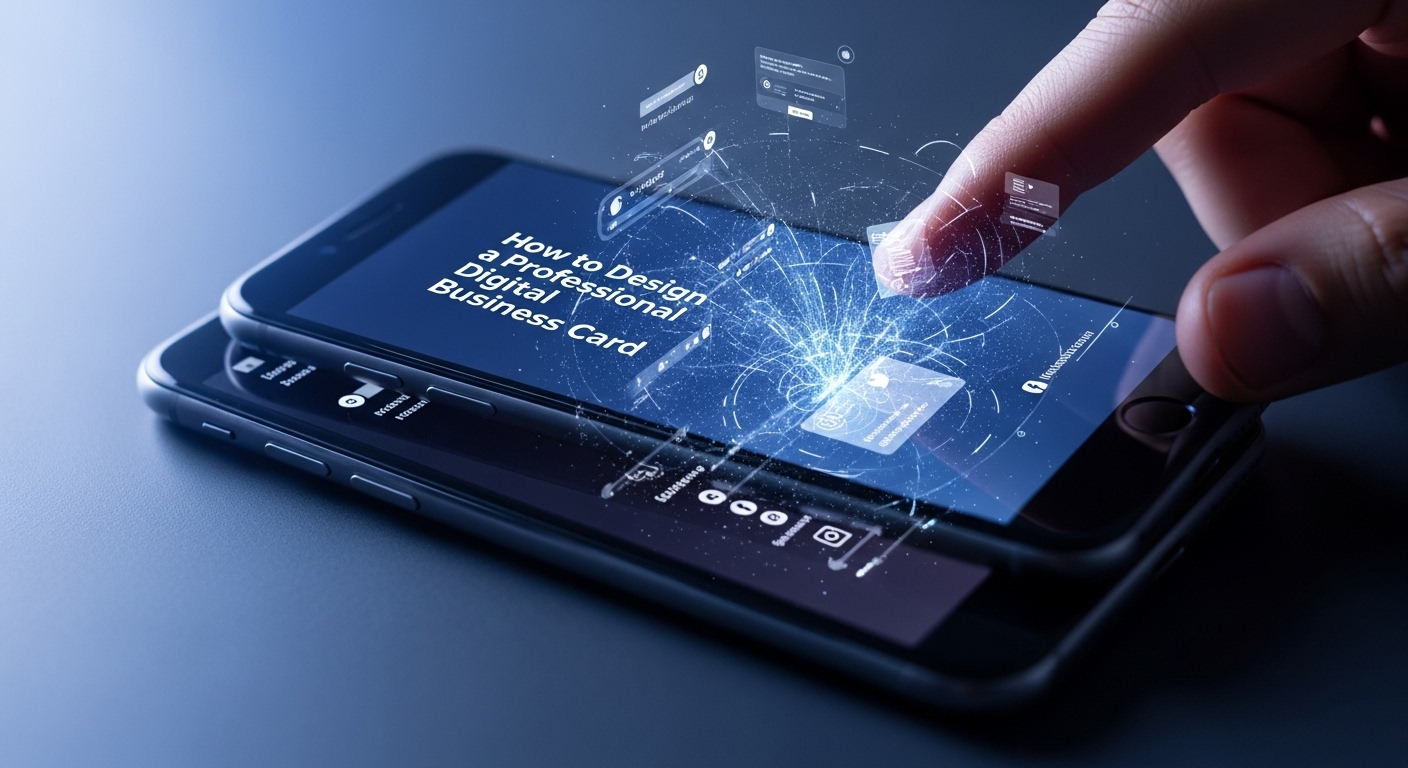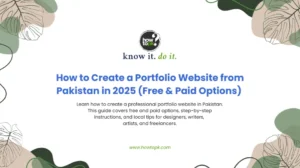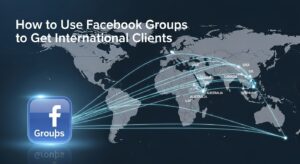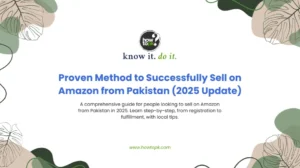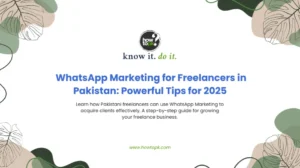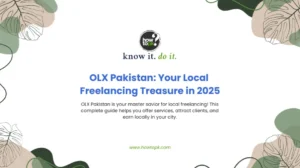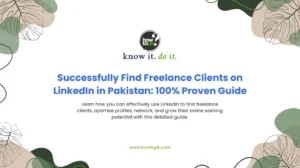In today’s fast-paced world, especially as a freelancer in Pakistan, making a memorable first impression is more important than ever. Gone are the days when a physical business card was your only option. Welcome to the era of the digital business card – a powerful, eco-friendly, and incredibly versatile tool that can elevate your professional image and networking game.
A digital business card is essentially an interactive webpage or a file that contains all your contact information, social media links, portfolio, and even payment details. It’s sharable instantly via a link, QR code, or even through a simple tap, making it perfect for both online and in-person interactions. For Pakistani freelancers, it’s a smart move to stand out in a competitive market.
This comprehensive guide will walk you through every step of creating a professional digital business card tailored for the Pakistani freelance landscape. We’ll cover everything from conceptualizing your card to sharing it effectively, ensuring you have all the knowledge to succeed.
Understanding What a Digital Business Card Offers
Before we dive into creation, let’s understand why a digital business card is a game-changer for freelancers in Pakistan.
Imagine your digital business card as a mini, interactive website about you. It’s not just your name and number; it’s a dynamic hub for your professional identity. Unlike a paper card that can be lost or discarded, a digital card offers rich features like clickable links to your portfolio, social media profiles (LinkedIn, Behance, GitHub, etc.), WhatsApp direct chat, and even your online payment methods if applicable. I1t’s a living document that you can update anytime without reprinting.
Step 1: Define Your Purpose and Content
The first crucial step is to determine what information you want to convey and what impression you want to make.
Sit down and brainstorm. What do you want people to do after they receive your card? Do you want them to visit your portfolio, contact you for a project, or simply connect on LinkedIn? Here’s a checklist of common elements to consider:
- Your Full Name: Professional and clear.
- Your Professional Title/Niche: Be specific. Are you a “Graphic Designer,” “Content Writer,” “Web Developer,” or “Virtual Assistant”?
- A Professional Headshot: A clear, friendly photo builds trust. Avoid selfies or casual photos.
- Contact Information:
- Mobile Number (with country code +92)
- Email Address
- WhatsApp (link directly to chat)
- Links to Your Portfolio/Website: This is vital for freelancers. Use platforms like Behance, Dribbble, GitHub, or your personal website.
- Social Media Links: LinkedIn is almost mandatory for freelancers. Consider others relevant to your niche like Instagram for designers, Twitter for writers, etc.
- Services Offered: A concise list of your core offerings.
- Call to Action (CTA): What do you want them to do next? “Visit my Portfolio,” “Schedule a Consultation,” “Connect on LinkedIn.”
- Location (Optional): If you prefer local clients in Pakistan (e.g., “Lahore-based Freelancer”).
- Payment Details/Links (Optional): If you frequently receive payments via specific local platforms or accounts, a link could be helpful.
Keep your content concise and impactful. People usually skim, so make every piece of information count.
Step 2: Choose Your Digital Business Card Platform
Several platforms allow you to create digital business cards. Your choice will depend on features, ease of use, and cost.
There are many options, ranging from free basic services to paid, feature-rich platforms. Here’s what to look for, keeping the Pakistani context in mind:
- Ease of Use: Look for drag-and-drop interfaces or intuitive editors.
- Customization Options: Can you match your brand colors, fonts, and add your logo?
- Link Support: Can you add all the links you need (portfolio, social media, WhatsApp)?
- QR Code Generation: Most platforms offer this, which is a common way to share in Pakistan.
- Analytics (Optional): Some platforms offer insights into how many times your card has been viewed or links clicked.
- Pricing: Many offer a free tier with basic features, which might be sufficient to start. Paid plans unlock more customization and advanced features.
You can consider platforms that offer dedicated digital business card services. Some popular choices often have user-friendly interfaces and good support for linking diverse content. E2xplore a few options before committing.
Step 3: Design Your Digital Business Card
This is where your digital business card truly comes to life. A professional and appealing design is key to making a great impression.
Think of your digital business card as an extension of your personal brand. Here are some design tips:
- Consistency is Key: Use your existing brand colors, fonts, and logo (if you have one). If not, choose a color scheme that reflects your personality and professionalism. Keep it simple and clean.
- High-Quality Headshot: As mentioned, a professional headshot is crucial. It adds a human touch and builds trust.
- Clear Typography: Ensure your fonts are readable on all devices, especially mobile phones. Avoid overly decorative or small fonts.
- Organize Information Logically: Group related information. Your name and title should be prominent, followed by contact details, and then your portfolio/social links.
- Minimalism Works: Don’t clutter your card with too much information or graphics. Focus on essential elements and white space.
- Test Responsiveness: Before finalizing, ensure your digital business card looks good and functions correctly on different screen sizes (phones, tablets).
- Local Touch (Optional): While a global standard is good, you might subtly incorporate elements that resonate with a Pakistani audience if your target market is local. This could be a specific color palette or a cultural reference, used sparingly.
Most digital business card platforms offer templates. Use them as a starting point and customize them to fit your brand. Don’t be afraid to experiment with different layouts until you find one you love.
Step 4: Add Your Content and Links
Once you have your design framework, it’s time to populate your digital business card with all the information you gathered in Step 1.
Go through your checklist from Step 1 and meticulously add each piece of information. Pay close attention to:
- Accurate Contact Details: Double-check your phone number (including +92), email address, and WhatsApp link. For WhatsApp, you can usually generate a link directly on the platform or manually using
https://wa.me/92XXXXXXXXXX. - Verify All Links: Click on every single link you add – your portfolio, LinkedIn, Facebook, Instagram, etc. Ensure they lead to the correct pages and are accessible. This is a common mistake and can be very frustrating for potential clients.
- Concise Service Descriptions: If you list your services, make them brief and impactful.
- Compelling Call to Action: Ensure your CTA button or text is clear and encourages the desired action.
- Proofread Everything: A typo on your digital business card reflects poorly on your professionalism. Read through it multiple times, and even ask a friend or family member to review it for any errors.
Remember, the goal is to make it incredibly easy for anyone who receives your card to connect with you and understand what you offer.
Step 5: Generate and Customize Your QR Code and Shareable Link
The beauty of a digital business card lies in its shareability. QR codes are particularly popular in Pakistan for quick sharing.
Most digital business card platforms will automatically generate a QR code for your card. Here’s what to do:
- Download Your QR Code: Download the QR code image in a high-resolution format (PNG or SVG are usually best).
- Test Your QR Code: Crucially, scan your QR code with multiple phone cameras to ensure it works perfectly. Test it in different lighting conditions. A non-functional QR code is a missed opportunity.
- Customize Your Shareable Link (If Possible): Many platforms allow you to customize the URL (e.g., https://www.google.com/search?q=yourname.platform.com or even a custom domain if you have one). A clean, memorable link is easier to share verbally or type.
- Consider NFC (Near Field Communication) Cards (Optional): Some advanced digital business card solutions offer NFC cards. These allow people to tap their phone on your card to instantly get your details. While a bit more expensive, they offer a very modern and seamless sharing experience. Research if this is an option within your budget and needs.
Having both a QR code and a direct link gives you flexibility in sharing.
Step 6: Practice Sharing Your Digital Business Card
Knowing how to share your digital business card effectively is just as important as creating it.
There are multiple ways to share your digital business card:
- In-Person (QR Code): The most common method. When meeting someone, simply open the QR code on your phone and ask them to scan it. Make sure your screen brightness is up.
- Via Link: Text or email your link directly to someone. This is great for follow-ups or when QR scanning isn’t convenient.
- Email Signature: Add your digital business card link to your professional email signature. Every email you send becomes a networking opportunity.
- Social Media Profiles: Include the link in your LinkedIn profile, Instagram bio, Facebook page, or any other professional social media platforms.
- Website/Portfolio: If you have a personal website or online portfolio, embed the link or the QR code there.
- WhatsApp: Share the link directly via WhatsApp chat, a popular communication method in Pakistan.
Practice scanning your QR code from different distances and angles to ensure it works well. Get comfortable with explaining what a digital business card is and how to use it, especially if the other person isn’t familiar.
Step 7: Maintain and Update Your Digital Business Card
One of the biggest advantages of a digital business card is its flexibility. Unlike paper cards, you can update it instantly.
Make it a habit to review your digital business card periodically, perhaps once every few months or whenever a significant change occurs in your freelance career:
- Contact Information Changes: Did you get a new phone number or email address? Update it immediately.
- New Portfolio Projects: Add links to your latest and greatest work. Your portfolio is a living document, and your digital business card should reflect its best aspects.
- Service Expansion: If you’ve started offering new services, update your card to reflect them.
- Brand Evolution: If you’ve updated your personal branding (logo, colors, fonts), ensure your digital business card aligns with these changes.
- Check for Broken Links: Periodically click on all your links to ensure they are still active and leading to the correct destinations. Websites go down, or URLs change.
The beauty of a digital business card is its dynamic nature. Leverage this to always present the most accurate and impressive version of your professional self.
Common Challenges and Tips for Freelancers
While creating a digital business card is straightforward, here are some challenges you might face and tips to overcome them, specific to the Pakistani context:
Internet Connectivity:
Sometimes, internet connectivity can be unreliable. Always have your QR code downloaded as an image on your phone so you can show it even without data. The person scanning it just needs their own internet connection.
Client Familiarity:
Some older or less tech-savvy clients might not be familiar with digital business cards. Be prepared to briefly explain what it is and how to scan it. A simple “Would you like my digital business card? You can just scan this with your phone camera” usually works.
Perception vs. Traditional Cards:
In certain traditional business settings, a physical card might still be expected. Consider carrying a few traditional cards as a backup, especially for very formal meetings, but always offer your digital card first. It shows you are modern and adaptable.
Security Concerns:
Ensure the platform you choose is reputable and secure. While unlikely for a business card, be mindful of what sensitive information you share. Stick to professional contact details and public portfolio links.
Branding for Local vs. International Clients:
If you cater to both local and international clients, ensure your digital business card is universally understandable. Avoid very specific local slang or references unless that’s your explicit niche. Keep the language professional and clear.
Creating a digital business card is an investment in your freelance career in Pakistan. It’s a modern, efficient, and impressive way to network, showcase your skills, and make a lasting impression in a competitive landscape. Embrace this technology, and watch your professional connections grow.
Resources
Digital Business Cards & QR Tools
- vCard – A digital business card standard, commonly supported across platforms.
- Beaconstac – A powerful platform for creating digital business cards.
- Popl – Digital business cards with NFC tag integration.
- HiHello – User-friendly platform for creating and sharing digital business cards.
- QR Code Generator – Online tool for creating QR codes to link to your digital card or portfolio.
Creative & Professional Portfolio Platforms
- Behance – Platform for showcasing creative portfolios.
- Dribbble – Ideal for designers to display and discover creative work.
- GitHub – Platform for developers to share code and collaborate on projects.
- LinkedIn – The go-to platform for professional networking and showcasing your credentials.

